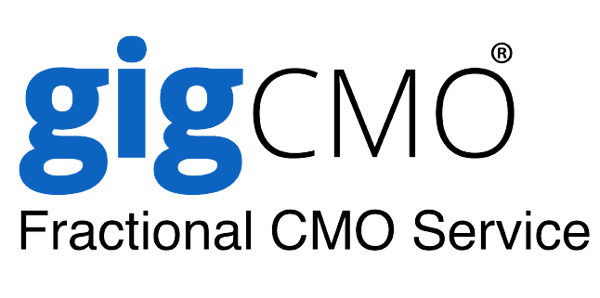
The concept of using a marketing strategy across multiple markets appears to be nothing but positive. It saves time and costs while ensuring a high level of consistency across marketing activities. However, to achieve this, businesses must have specific marketing capabilities.
Marketing capabilities are one of the strong attributes of those businesses that outperform their competitors. Therefore, most organisations are investing largely in the development of marketing capabilities, which benefits the organisation with both business growth and competitive advantage.
What are Capabilities?
Capabilities are described as the ability and the capacity to use the assets of an organisation efficiently.
Some examples include technological understanding, production abilities, managerial competence, business experience, and so on. Most of the organisation's capabilities have a human base. The capabilities of an organisation assist managers in making efficient and effective use of resources.
When organisational resources are integrated to fulfill a given task or several activities, capabilities are developed. These tasks can range from hiring a team member and selection to executing activities and development of operations. The majority of the capabilities are developed by the unique talents and expertise of the business team members.
Developing a Successful Business Growth Strategy
Creating a growth strategy requires collaboration among a cross-functional group of business owners and teams; it cannot be done by a few people in a room with a whiteboard. To be successful with your strategy, you must look at what will have a big impact on business growth. Let's look at a few examples.
1. Value Propositions and Business Growth Strategies
To grow, a company must reach out to existing customers and attract new ones. To accomplish this, the business must create a value proposition that clearly outlines what it does and why customers require it. Then, it must develop a growth plan that outlines the steps that the company will take to bring new products to market.
2. Customer Experience and Brand Relevance
Even the most well-known brands had to start from scratch at some point. So, how did they become some of the market's greatest names? By increasing customer relevance and providing a unique and seamless customer experience.
Building a brand is about much more than a logo and a colour scheme (though these are vital for brand identification). Your brand should be identified by its values and how customers perceive you, both of which should be highlighted in your growth plan.
3. Consider Long-Term Business Growth
Being entirely concerned with the now and making rash decisions regarding the future is never a good idea. Your business needs to give time and resources to consider where the world is headed and what it implies for your customers, partners, team members, and others. Your growth strategy will help you make informed decisions and ensure the long-term success of your business.
4. Expanding to New Markets, Categories, and Customer Segments
Before making major growth initiatives, the foundation of your business must be stable. Outlining longer-term goals will also assist you in determining the steps you need and measuring your success along the way. Consider it as a road map. Small wins can serve as stepping stones toward your long-term goal of growing into new markets, categories, or new industries.
5. A Balanced Approach to Sustainable Growth
It’s a common narrative - businesses that expand rapidly, only to collapse under their own weight due to an inability to keep up. A well-planned growth strategy may lead your company's expansion at a manageable pace. The idea is to prevent overreaching in search of short-term profits that may eventually put too much strain on your company and its employees.
It may be challenging to make adjustments, sometimes missing opportunities in favour of better options, but such decisions are frequently critical for your company's long-term success. This is not to say that you should avoid taking risks. Any risks you take should be consistent with your overall strategic objective.
7 Steps to Develop Effective Marketing Capabilities for Business Growth
Developing effective marketing capabilities and marketing growth strategies for business growth is crucial for long-term success. Here, we'll break down each step:
Step 1: Identifying Growth Strategy and Go-to-Market Gaps
Before diving into developing marketing capabilities, it's essential to have a clear understanding of your business's growth strategy and identify the gaps in your go-to-market strategy approach. This involves:
- Market Analysis: Assess the current market conditions, competition, and customer segments. Identify growth opportunities and potential threats.
- Goal Setting: Define specific growth objectives, such as increasing market share, launching new products/services or expanding to new markets.
- Gap Analysis: Determine the discrepancies between your current marketing capabilities and the requirements to achieve your growth objectives.
Step 2: Establishing the Structure and Processes
Next, you need to set up the business structure and processes to support your marketing efforts. This includes:
- Team Structure: Determine the roles and responsibilities within your marketing team. Ensure that there is clear leadership and coordination.
- Workflow Processes: Develop efficient workflows for planning, executing, and monitoring marketing campaigns.
- Resource Allocation: Allocate budget and resources based on your growth strategy and the identified gaps.
Step 3: Evaluating In-House and Outsourced Capabilities
Assess whether you have the necessary in-house capabilities to meet your marketing goals or if you need to outsource certain tasks. This involves:
- In-House Assessment: Evaluate the skills, expertise, and capacity of your current marketing team.
- Outsourcing Options: Consider outsourcing specific tasks like content creation, SEO, or social media management to agencies or freelancers.
Step 4: Assessing Competencies and Capabilities
Identify the specific competencies and capabilities required for your marketing efforts, which may include:
- Analytics: The ability to gather and analyse data to make informed decisions is vital. Marketing campaigns often rely on data-driven insights to assess their effectiveness.
- Creativity: Marketing often demands creative thinking to develop unique and engaging campaigns. Creative individuals can generate fresh ideas and innovative solutions that capture the audience's attention.
- Problem Solving: The capacity to identify marketing-related issues and devise effective solutions. Problem-solving skills are invaluable for adapting to market changes and optimising marketing initiatives.
- Initiative and Taking Ownership: Demonstrating a proactive attitude and taking responsibility for marketing projects can lead to greater success. This involves showing leadership, self-motivation, and a willingness to go the extra mile.
Step 5: Comprehensive Screening Against Set Criteria
Establish clear criteria for evaluating potential hires or outsourced partners. This should include:
- Attitude and Professionalism: Assess the attitude and professionalism of candidates or agencies. Look for a positive attitude, adaptability, resilience, and a customer-centric focus that aligns with your business values.
- Competencies: Assess candidates or agencies based on their skills, experience, and past performance.
- Cultural Fit: Consider whether individuals or partners align with your company's values and goals.
- Cost and ROI: Evaluate the cost-effectiveness and potential return on investment of each option.
- Cross-Functional Collaboration: The ability to work effectively with other departments, such as sales, product development and more.
Step 6: Smooth Onboarding
Once you've selected in-house team members or outsourced partners, ensure a seamless onboarding process:
- Training: Provide necessary training to bridge any skill gaps and align them with your company's goals.
- Clear Communication: Establish open channels for communication and clarify roles and expectations.
- Access to Resources: Ensure they have access to the tools and resources needed to perform their roles effectively.
Step 7: Continuous In-House Capability Development and Ongoing Evaluation of Outsourced Resources
To maintain and enhance your marketing capabilities:
- Training and Development: Invest in ongoing training programmes and development for your in-house team to keep their skills up to date.
- Performance Evaluation: Continuously evaluate the performance of both in-house and outsourced resources against predefined KPIs.
- Constant Improvement: Make adjustments and refinements as needed to stay aligned with your growth strategy.
By following these strategic steps, you can systematically develop and enhance your marketing capabilities, aligning them with your growth strategy and achieving sustainable business growth. If you're ready to learn how to create or refine your growth strategy, gigCMO Fractional CMO Service can help.



